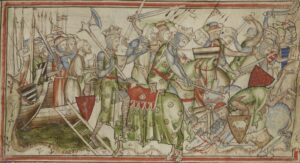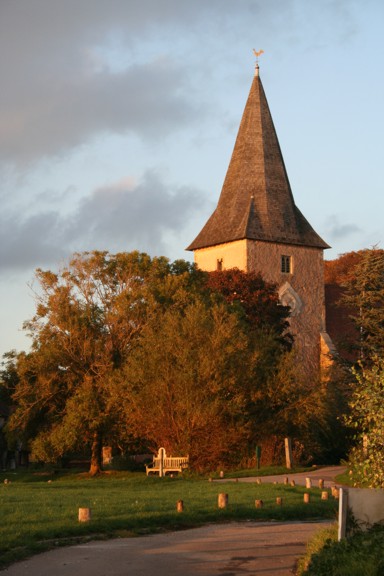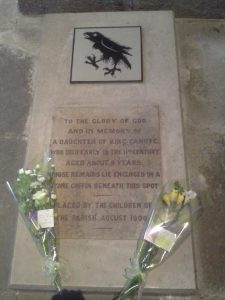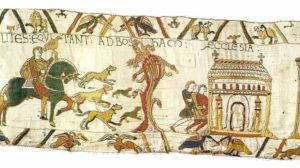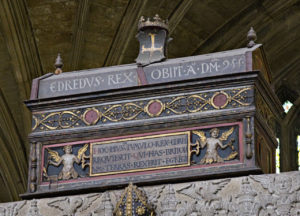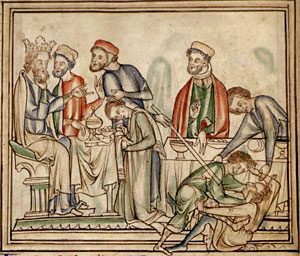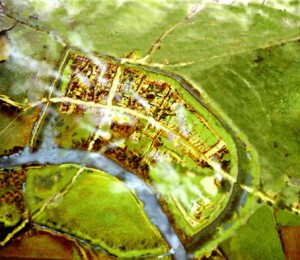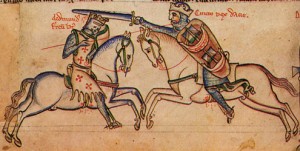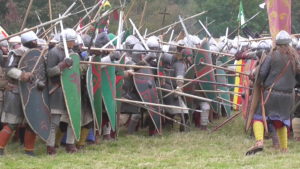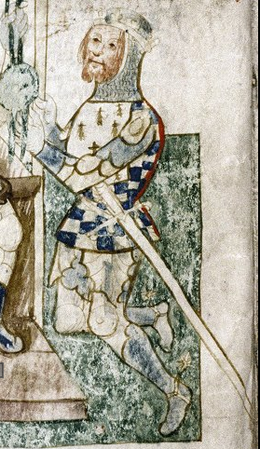
Alain le Roux (c. 1040–1094) is one of my favorite historical characters who seems to have been important in his time, but nobody seems to have heard of him. Why do I like him so much? Well, as I see it he went with the flow (so to speak), amassed an incredible fortune (according to Wikipedia, at the time of his death he was worth around $166.9 billion, the equivalent of 7% of England’s national income. Forbes placed him 9th in the list of most wealthy historical figures) and modestly did his thing, managing to keep King William happy as well as historians.
Alain – called le Roux because of his red beard – hits the historical stage around the time of the Norman Conquest. He was in charge of the Breton contingent, a sizeable part of William’s invasion force. If you recall, the Breton wing of the Norman army at the Battle of Hastings nearly lost the day: they were the first to panic and flee from the ferocity of the Saxons. For a moment all was in chaos, then many of the inexperienced Saxon fyrd broke the shield wall and pursued the Bretons. However, William rallied his men and cut off the Saxons from the rest of the army, wiping them out to a man. Seeing the success of the maneuver, William instructed the Bretons to do it a couple of times more throughout the battle, with great success.
After William become king he rewarded his supporters with grants of land and titles. Alain was created the first Earl of Richmond, and a Norman keep stands on the site of his original castle overlooking the River Swale. In 1069, during the great Harrying of the North after the insurrection of Durham, Alain was the man William appointed to do the job. By the end of his career, he had amassed over 250,000 acres in land grants. Yet he is said to have died childless and his estate was inherited by his brother Alain le Noir (so-called because of his black beard).
Early in my research for my novel, “Heir to a Prophecy” I unearthed a story that my protagonist Walter actually went to Brittany and married Alain’s daughter, later taking her to Scotland and the court of Malcolm III where he was a favorite. Although this is probably apocryphal, I did recently find an anecdote that makes me wonder if it could be true.
Just the other day I was reading the book “The House of Godwine: The History of a Dynasty” (by Emma Mason) which was written in 2005. Four pages from the end, the author states that King Malcolm planned to marry his daughter Edith to Count Alan the Red in 1093 (she was in the Wilton nunnery at the time), and King William Rufus forbade the union, causing Malcolm to storm out of the royal court. Now, why would Malcolm care about Alain unless there was some sort of connection between them (Walter)?
Even more interesting (to me, that is), instead of Malcolm’s daughter, Alain actually took a fancy to another important novice at Wilton: Gunhild, daughter of Harold Godwineson and Edith Swanneck. At the same time Malcolm took his daughter out of Wilton, Alain removed Gunhild (by then well into her 30s) and brought her to live with him…on the very estates he had taken over from her wealthy mother after Hastings. When Alain died around 1094, Gunhild stayed and became the partner of Alain’s brother Le Noir, who succeeded to the estates. What did she have to lose, after all?
